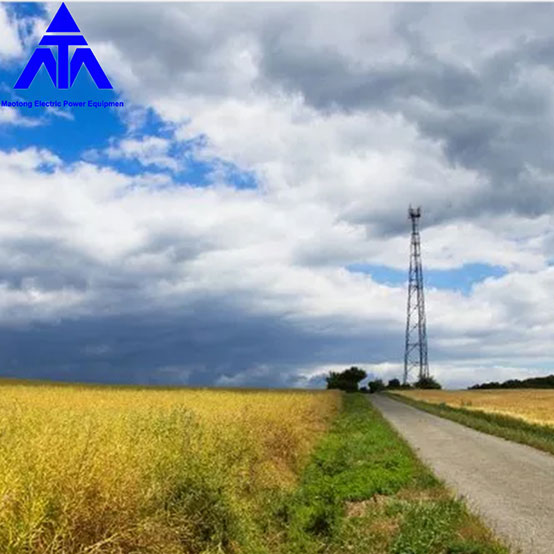Seamless Integration: Optimizing Network Performance with High-Density Telecommunication Tower Steel Pipes
2024-02-20
In the intricate web of modern telecommunications networks, every component plays a crucial role in ensuring seamless connectivity and reliable performance. High-density telecommunication tower steel pipes serve as the sturdy backbone upon which a multitude of other components are integrated to optimize network performance and reliability. From antennas and amplifiers to transmission equipment and beyond, let's explore how these steel pipes are seamlessly integrated with other components to create robust telecommunications infrastructure.
Supporting Antennas and Transceivers
Antennas and transceivers are fundamental elements of telecommunications networks, facilitating the transmission and reception of signals across vast distances. High-density telecommunication tower steel pipes provide the structural support necessary for mounting antennas and transceivers at optimal heights and orientations. By securely anchoring these components to steel pipes, network operators can maximize signal coverage, minimize interference, and ensure reliable communication between network nodes.
Amplifying Signals and Enhancing Coverage
Amplifiers and signal boosters play a vital role in extending the reach and coverage of telecommunications networks, particularly in remote or underserved areas. High-density telecommunication tower steel pipes serve as mounting platforms for installing amplifiers and signal boosting equipment, strategically positioned to amplify signals and enhance coverage in areas with weak or intermittent connectivity. By integrating amplification solutions with steel pipes, network operators can improve signal quality, increase data speeds, and provide seamless connectivity to users across diverse geographical regions.
Housing Transmission Equipment and Networking Gear
Transmission equipment and networking gear form the backbone of telecommunications infrastructure, facilitating the routing, switching, and management of data traffic across the network. High-density telecommunication tower steel pipes are equipped with mounting brackets, enclosures, and cable management systems to house transmission equipment and networking gear securely. By integrating these components within steel pipe structures, network operators can centralize equipment deployments, minimize footprint, and streamline maintenance operations, enhancing network scalability and efficiency.
Facilitating Vertical Integration and Multi-Tenancy
Vertical integration and multi-tenancy strategies enable network operators to maximize the utilization of telecommunications infrastructure by accommodating multiple tenants and communication technologies within a single tower structure. High-density telecommunication tower steel pipes provide the vertical support necessary for integrating antennas, transceivers, amplifiers, and transmission equipment from multiple service providers and network operators. By facilitating vertical integration, steel pipes optimize the use of limited space, reduce visual clutter, and promote co-location, fostering collaboration and resource sharing among stakeholders.
Ensuring Resilience and Reliability
In addition to facilitating the integration of components, high-density telecommunication tower steel pipes contribute to the resilience and reliability of telecommunications infrastructure. Engineered to withstand environmental challenges, such as extreme weather conditions, seismic activity, and corrosive environments, steel pipes provide a sturdy foundation for critical network elements. By ensuring the structural integrity of tower structures, steel pipes minimize downtime, reduce maintenance costs, and enhance the overall resilience of telecommunications networks, ensuring uninterrupted connectivity for users.
Conclusion
High-density telecommunication tower steel pipes serve as indispensable components of modern telecommunications infrastructure, providing the structural support necessary for integrating antennas, amplifiers, transmission equipment, and networking gear. By seamlessly integrating these components within steel pipe structures, network operators can optimize network performance, extend coverage, and enhance reliability, ensuring seamless connectivity for users across diverse geographical regions. As telecommunications technology continues to evolve and networks expand, the role of high-density steel pipes in supporting the integration of components remains paramount, driving innovation and connectivity in the digital age.



